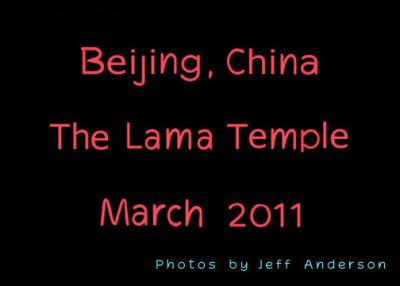
Beijing, China - The Lama Temple cover page. |
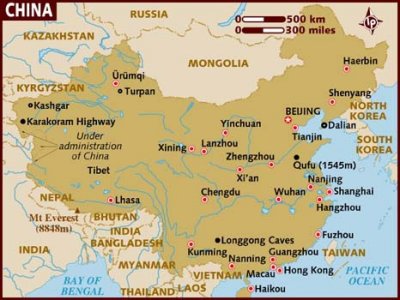
Map of China with star indicating Beijing. |
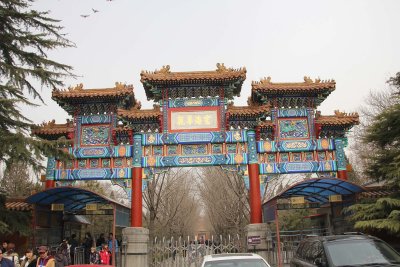
Entrance to the Lama Temple, built by Prince Yong starting in 1694. It served as an official residence for court eunuchs. |
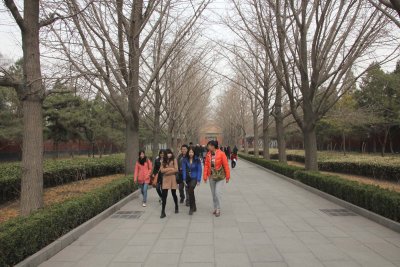
Later, it became the prince's residence. After the prince came to the throne as Emperor Yonghegong, it was turned into a palace. |
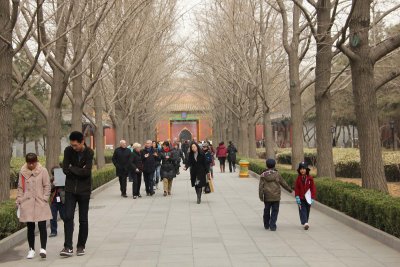
After Yongzheng's death in 1735, his successor, Emperor Qianlong, changed the palace into a lama temple. |
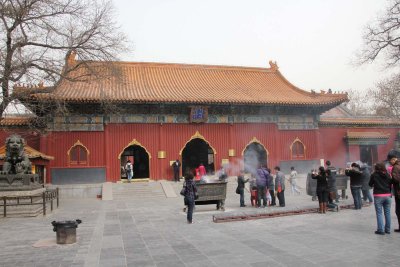
The Hall of the Heavenly Kings, is the first hall of the temple. The main buildings are built along a central axis. |
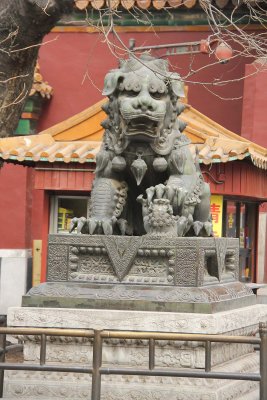
Male lion statue in front of the Lama Temple. |
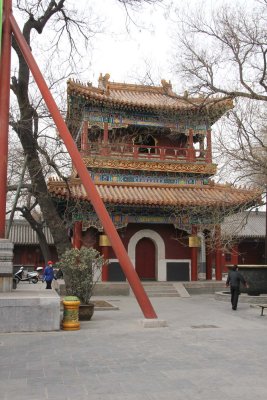
Smaller building flanking the side of the temple. |

Women praying and burning incense in front of the Hall of the Heavenly Kings. |
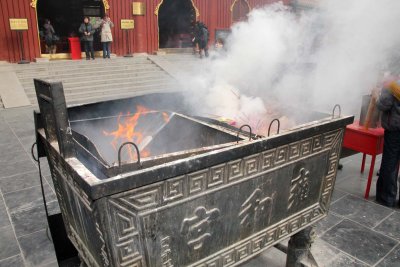
Incense burner flaming and billowing smoke. |
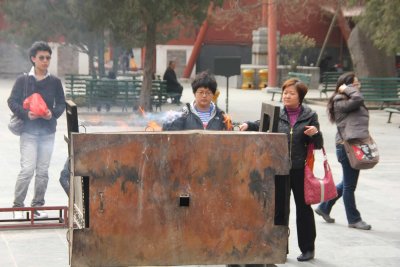
Buddhist worshippers praying and making offerings of incense. |
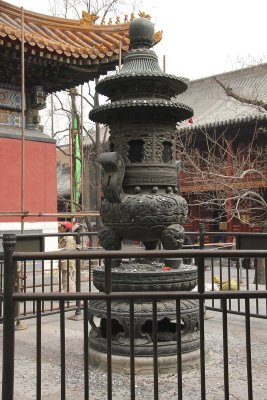
A magnificent metal urn at the Lama Temple. |
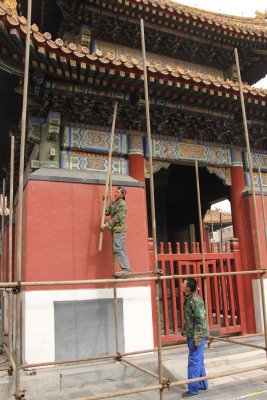
Men were doing renovation work on the outside of this pavilion. |
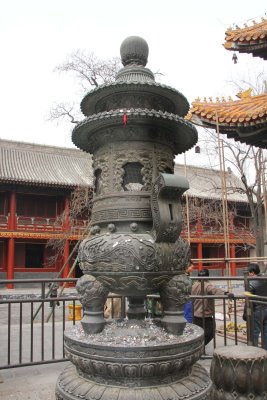
Another magnificent metal urn at the Lama Temple. Note the coins tossed at its base for good luck. |
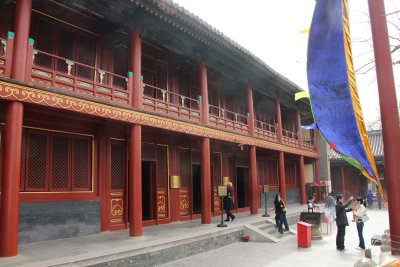
The layout of the temple embodies the characteristics of Manchu, Han, Tibetan and Mongolian cultures. |
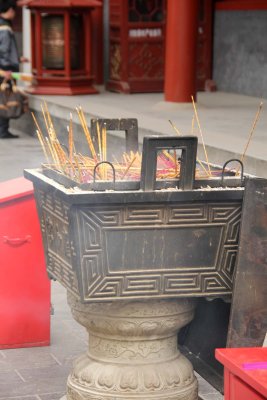
Sticks protruding from another incense burner. |
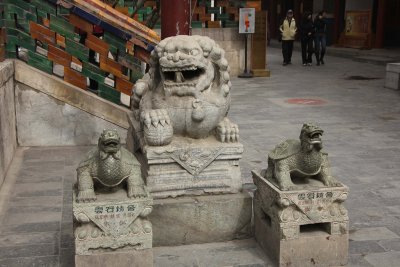
A male lion sculpture with tortoises. |
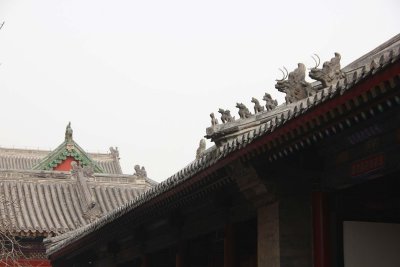
Animal designs on the temple roof. Usually, the more animals there are, the more important the building. |
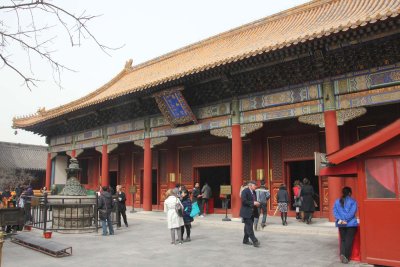
Exterior view of the Hall of Harmony and Peace, which is the main building of the temple. |
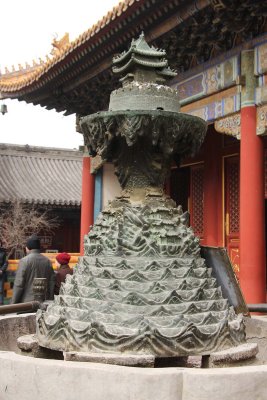
At the Hall of Harmony and Peace is a bronze Mount Meru (1.5 meters tall), which is set on a white marble base in a stone pool. |
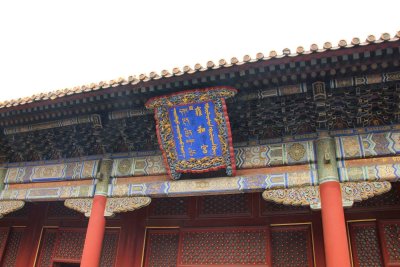
Above the hall is this intricately-carved nameplate with Chinese writing. |
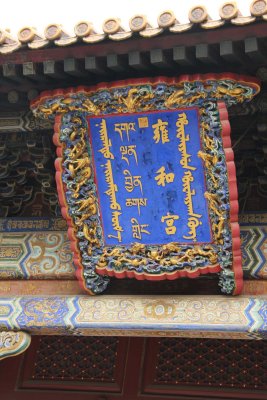
The nameplate is spectacular with golden dragons and bright colors. |
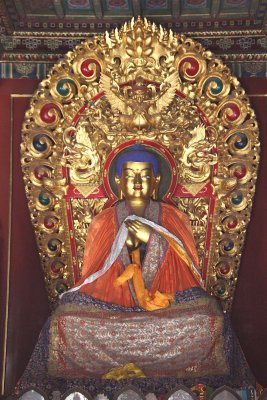
The Hall of Harmony and Peace is adorned with statues of three Buddhas. |
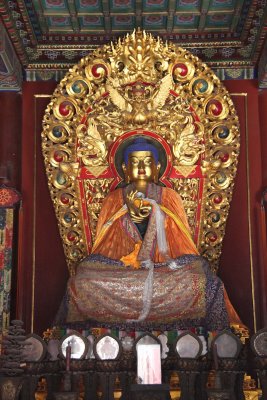
They are: Sakyamuni (Buddha of the Present), Kasyapa Matanga (Buddha of the Past) and Maitreya Buddha (Buddha of the Future). |
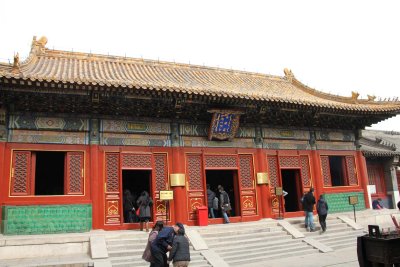
Hall of Everlasting Protection was Emperor Yongzheng's living quarters as a prince. His coffin was placed there after he died. |
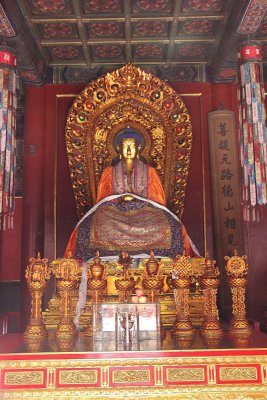
Statue of the Bhaisajya-guru (healing Buddha) in Hall of Everlasting Protection. |
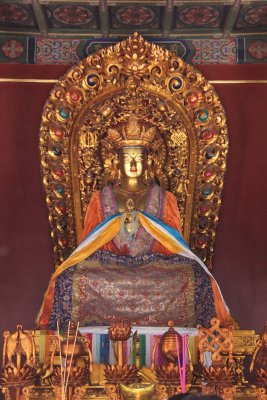
This magnificent Buddha in the hall is enshrined in gold and silk. |
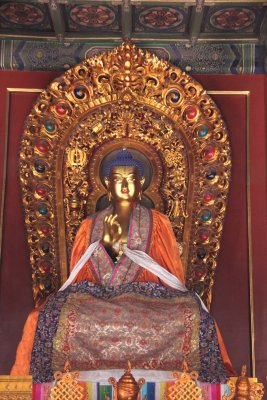
Another elaborate Buddha in the Hall of Everlasting Protection. |

Hall of the Dharma Wheel is where lamas hold ceremonies and read sutra (in Hinduism sutra is a type of literary composition). |

Buddha’s teachings, known as Dharma, are likened to a wheel spreading among the people putting his teachings into practice. |

Buddhist monk in front of the Hall of the Dharma Wheel. |
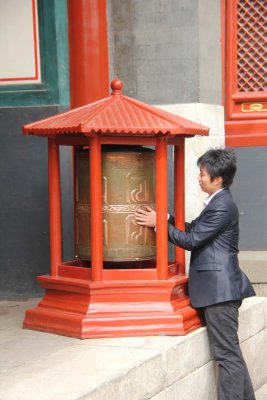
This man was spinning the prayer wheel outside of Hall of the Dharma Wheel. It can be likened to Buddha's Dharma Wheel. |
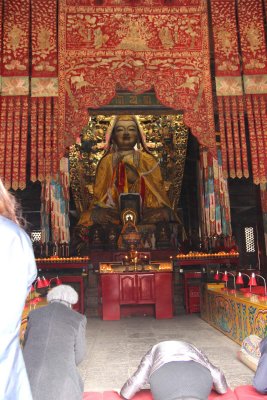
Inside the hall is a statue of Tsong Khapa, the father of the Yellow Hat Sect of Tibetan Buddhism. |
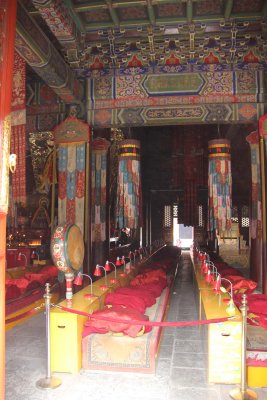
Pews inside the Hall of the Dharma Wheel. |
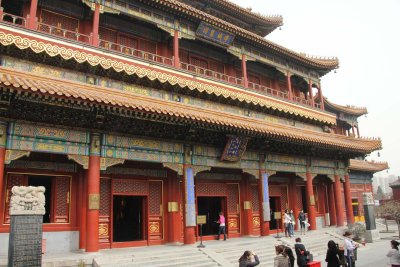
The 3-story Hall of Infinite Happiness is the tallest hall at the temple. It is attached to two smaller pavilions. |
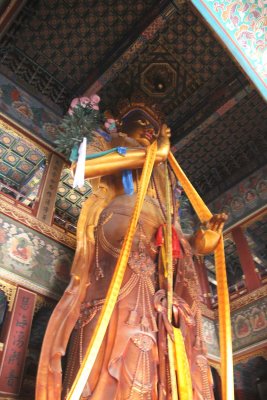
In the Hall of Infinite Happiness, is a huge sandalwood statue of Maitreya (future Buddha). It is 26 meters (85 feet) high. |
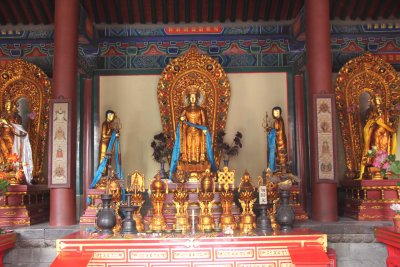
Other beautiful Buddhas in the hall. |
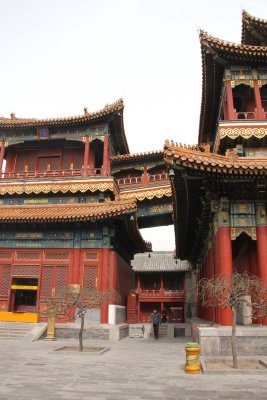
Hall of Infinite Happiness and Hall of Eternal Health are connected. Their engraved beams and pillars are beautiful. |
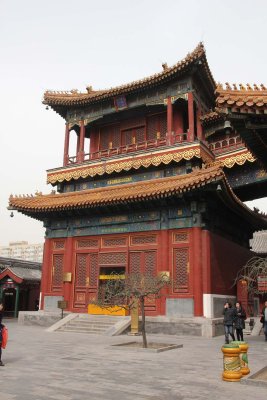
View of the Hall of Hall of Eternal Health in the Liao Dynasty style. |
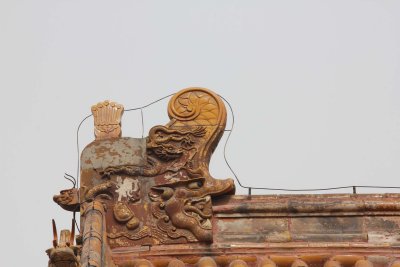
A wonderful dragon ornament on the roof of the Lama Temple. |
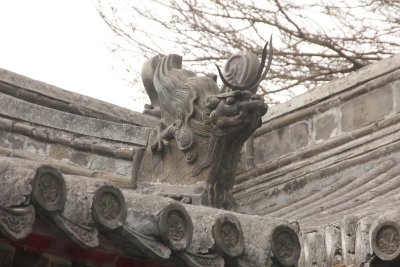
This spectacular dragon was in a corner along the cornice of the temple. |











